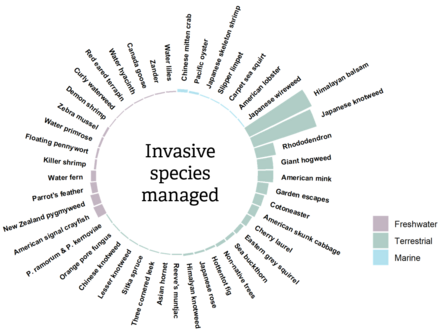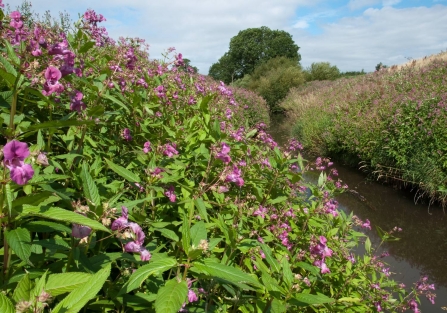In the winter of 2020/2021 stakeholders including Local Action Groups (LAGs) from across Wales took part in a survey about their invasive species work. Now we share a summary of the findings, and how the answers are shaping the Wales Resilient Ecological Network (WaREN) project. You can also watch our webinar below to learn more. Contact us to join our Network or if you are involved in invasive species work in Wales!
A total of 87 participated in the survey conducted by colleagues from the North Wales Wildlife Trust and the Wildlife Trust of South and West Wales. Below is a summary of the results.
How does your group/local authority tackle invasive species?
- 45 species, taxa or 'groups of concern' are managed in Wales: 23 terrestrial, 15 freshwater and 9 marine species (shown below).
- Himalayan balsam (Impatiens glandulifera) and Japanese knotweed (Reynoutria japonica) are managed by more stakeholders than any other invasive species reported.
- 10 different control measures are used to manage invasive species, mainly chemical and mechanical control.



